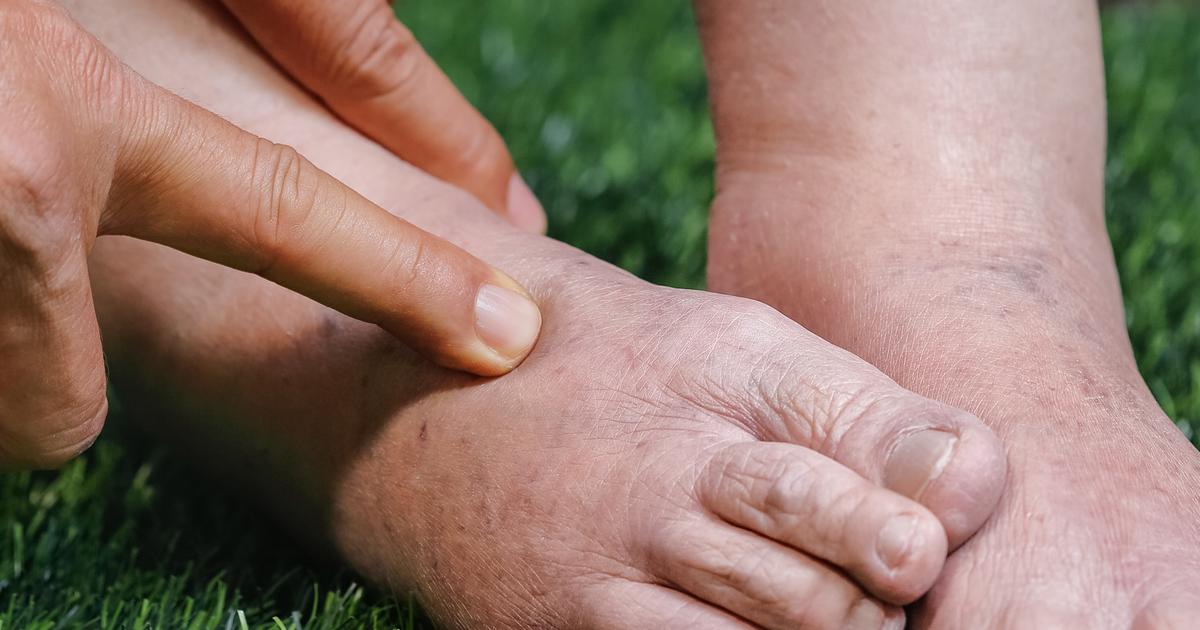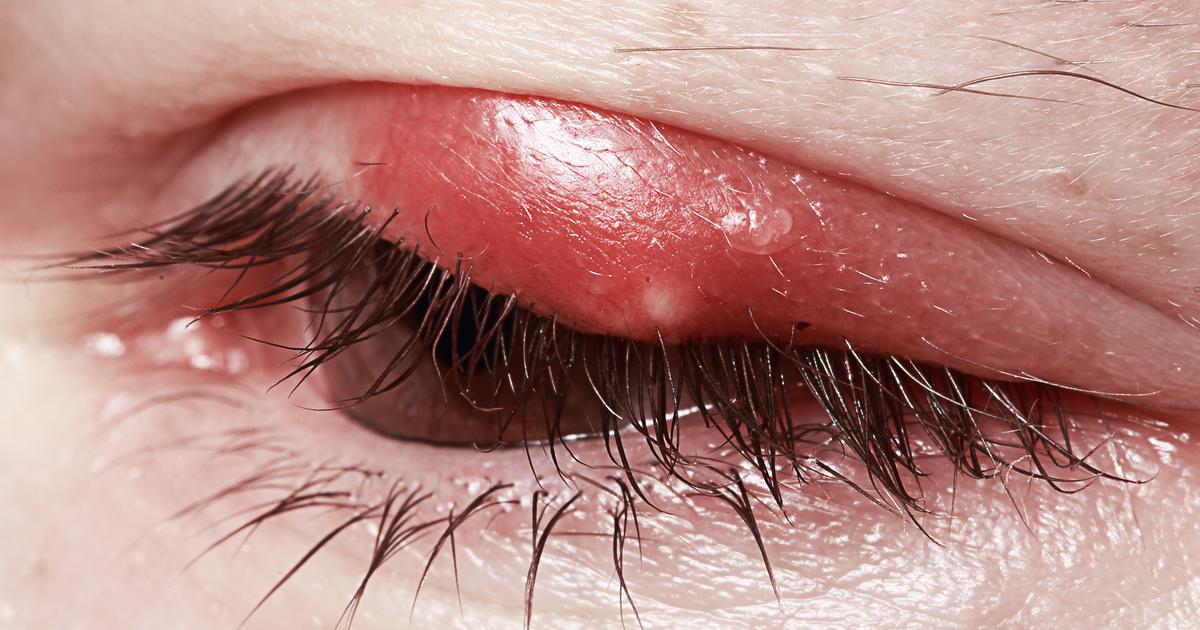Guide To The Symptoms And Types Of Cellulitis
Cellulitis is one of the most common infections. It happens when bacteria enter the skin through an abrasion, cut, scrape, or other opening in the skin. Cellulitis is typically treated with a course of antibiotics. Some individuals are at a higher risk of developing cellulitis than others. If individuals have a compromised immune system, their body may not be able to fight off the same type of bacteria someone with a healthy immune system can. It's important to get treatment right away, as untreated cellulitis can spread into the bloodstream and to other parts of the body, causing the infection to quickly become life-threatening. Typically, skin affected by cellulitis will be tender, warm, red, and painful to touch. If individuals know the signs of cellulitis, they can seek treatment.
Blisters And A Rash

Cellulitis can cause blisters and a rash, though several other skin conditions can lead to rashes and blisters as well. If individuals are not certain of the cause, it's best to seek a doctor's opinion. Whether the underlying condition is cellulitis or not, a doctor will usually be able to make a treatment plan. Most cases of cellulitis involve symptoms on just one side of the body, rather than mirrored symptoms. They may develop around an obvious skin abrasion, but they might also develop seemingly without reason. The abrasion that allows bacteria inside might be small enough that it's not noticeable to the naked eye. Cellulitis is most likely to develop on the lower legs, but it can also develop on any part of the body. In addition to the rash, blisters, and redness, patients might also notice the skin is dimpled or warm to the touch. These signs of infection should be inspected by a doctor immediately.
Pain And Tenderness

Pain and tenderness are common when dealing with cellulitis. The reddened areas of skin tend to be tender or painful to the touch. Patients might also experience unusual feelings of warmth when they touch their skin or hover a hand over it. One important note is that cellulitis occurs when the bacteria infects both the skin and soft tissues underneath it. This allows the bacteria to spread and can send an individual's immune system into overdrive. Researchers discovered the reason for the pain is that the bacteria trigger nerve cells. When the bacteria fester underneath and inside the skin, they cause direct stimulation to the neurons that identify pain. The body's pain response is a way of warning an individual something is wrong. This is the same reason other types of bacterial infections can cause pain. Whether individuals are dealing with a skin infection, urinary tract infection, tooth abscess, or some other bacterial infection, the bacteria can cause pain when they press against the nerves.
Inflammation And Swelling

Cellulitis can lead to inflammation and swelling around the site of the infection. Swelling occurs when an excess of fluid pools underneath the skin, and inflammation is a byproduct of the immune system's response to the infection. When the immune system targets bacteria and other types of infection, the process causes inflammation. The exact area of the inflammation depends on where the infection is and what the immune system is attacking. Patients with chronic autoimmune diseases can experience widespread inflammation even when they don't have an infection like cellulitis. Inflammation occurs when the white blood cells and the byproduct substances they create fight foreign organisms. Some of the most common symptoms of inflammation are redness, swelling in the joints, pain, stiffness, and a loss of joint function. Individuals might also experience feelings of general unwellness due to the body fighting the infection. Inflammation and swelling occur when the immune system releases chemicals into the bloodstream and other tissues of the body, helping fight foreign organisms and protect the immune system. The chemicals also increase overall blood flow to the site of the injury.
Fever And Chills

Fever and chills are also symptoms that occur when the body is fighting an infection. In the case of cellulitis, patients might experience a low-grade fever when the infection is in its initial stages. If the infection spreads to other parts of the body, though, the fever might become much higher. A fever greater than 103 degrees Fahrenheit is considered a high fever. High fevers that last for prolonged periods can cause severe damage to the body, so patients need to seek medical treatment if they have a high temperature. Like inflammation, a fever is caused by the immune system releasing chemicals into the bloodstream. In the case of fevers, the chemicals involved are called pyrogens. When pyrogens flow to the hypothalamus, they bind to some of the receptors found in this brain structure. Since the hypothalamus is responsible for regulating body temperature, this causes an individual's body temperature to rise. Some researchers believe this may be the body's evolutionary way of killing certain bacteria and viruses that can't thrive in high temperatures.
Drowsiness And Lethargy

When an individual's body is fighting an infection, it can take a lot out of them. Patients might experience flu-like symptoms including drowsiness and lethargy. Sudden experiences of unexplained lethargy and drowsiness can be a sign of a serious infection, especially if they're combined with a high fever or large amounts of inflammation. If individuals believe they might have an infection, it's best to have a doctor check them out. If cellulitis bacteria spread to other parts of the body, the infection might become life-threatening very quickly. Individuals might also be at a higher risk of developing cellulitis if they have certain conditions that cause drowsiness and lethargy by themselves. These might include chronic conditions like chronic fatigue syndrome and fibromyalgia, along with any conditions that can cause a weakened immune system, like diabetes or HIV.
Nausea And Vomiting

Cellulitis, as we know, is an infection that occurs in the deep layers of the skin. Because the deep layers of the skin contain small blood vessels, it is easy for an untreated cellulitis infection to make its way into the bloodstream. When an infection invades the bloodstream, it poisons organs and tissues around the body. When there are toxic substances in the body, the nausea center in the brain becomes activated. This mechanism is a protective measure the body takes by attempting to expel any toxic substances from the stomach. An infection in the bloodstream can produce small blood clots that cause kidneys to fail, which also causes nausea and vomiting when toxic substances accumulate in the body. A cellulitis infection can spread to the digestive tract, irritating the nerve fibers that control the movement of these structures. This nerve irritation can also produce nausea and vomiting.
Periorbital Cellulitis

Periorbital cellulitis is a form of the condition where the skin infection develops around their eyes or in their eyelids. Periorbital cellulitis develops when the soft tissue around the eye is attacked by bacteria that have found an entrance to the body. These bacteria can invade the body through the sinuses or cut in the skin. Some individuals develop periorbital cellulitis as a reaction to a bump on their eyelid caused by an infected gland or stye. An individual affected by periorbital cellulitis does not experience vision complications because a layer of tissue stops the infection from moving into the eye. Periorbital cellulitis patients can present with symptoms such as an insect bite, scratch, or cut near their eye, tenderness around the eye, redness in the whites of the eye, swelling around the eye, and redness around the eye. Pain and fever are not features that occur in periorbital cellulitis.
Facial Cellulitis

Facial cellulitis is an infection of the deep layers of facial skin. Bacteria that cause facial cellulitis enter these deep skin tissues through a scratch, cut, infected hair follicle, or infected pimple. The most common area affected by facial cellulitis is the cheeks, but it can also develop behind the ears, around the eyes, behind the eyes, and on the neck. An individual affected by facial cellulitis will have areas of facial skin that are warm to the touch, sore or painful, swollen, red, and have a visible border. The bacteria known to cause facial cellulitis are referred to as staphylococcus and streptococcus bacteria. When facial cellulitis goes untreated, symptoms can become worse. The cellulitis infection can enter the lymph nodes, lymphatic system, and bloodstream when it is left untreated. Facial cellulitis is most commonly treated using oral antibiotics and medications to reduce fever and relieve pain.
Perianal Cellulitis

Perianal cellulitis is an infection of the deep skin tissues around the anus and rectum. The most common type of bacteria known to cause the development of perianal cellulitis is the streptococcus bacteria. Most individuals who develop perianal cellulitis have recently had another infection such as nasopharyngitis, strep throat, or impetigo. These infections are spread from the hands to the anal area, where the bacteria find a vulnerability in the skin and colonizes. Children are most often affected by perianal cellulitis due to a lack of proper hygiene practices when they are already ill. A rectal skin culture, throat culture, and rectal swab culture can be used to make a diagnosis of perianal cellulitis. Without treatment, perianal cellulitis can produce complications such as the development of a fistula, abscess, anal scarring, discharge, bleeding, acute glomerulonephritis, necrotizing fasciitis, and a bloodstream infection.
Other Types And Locations

One of the most common parts of the body to become affected by cellulitis is the lower legs. It is also common for cellulitis to affect the arms, head, and neck. In special circumstances, an individual may develop cellulitis in their chest or abdomen. Abdominal skin can develop cellulitis in individuals who are particularly obese. Cellulitis is more likely to develop in the limbs than anywhere else because those parts of the body generally incur more cuts and abrasions that would allow bacteria into the body. Erysipelas is a type of cellulitis caused by the streptococci bacteria that affect the skin. A type of cellulitis referred to as methicillin-resistant S. aureus (MRSA) is known to be resistant to numerous antibiotics, which makes it particularly dangerous. Cellulitis can develop on the extremities as the result of a cat or dog scratch due to the Pasteurella multocida bacteria. Cellulitis that develops from exposure in seawater or freshwater is caused by the Vibrio vulnificus, Aeromonas hydrophilia, and other types of bacteria.
